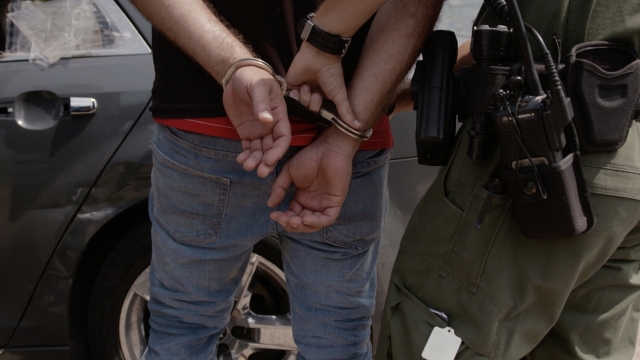Supporters of President Trump's proposed border wall sometimes point to existing border barriers as proof that a larger one would be more effective.
Sen. Shelley Moore Capito tweeted that arrests at four specific sections of the southern border dropped significantly after barriers were built. She said, "Let’s admit that physical barriers need to be a part of the solution."
It looks like her statement was inspired by a website from the Republican National Committee that's designed to increase support for a border wall. That site includes seven statistics, but it does not include any source information. Capito's office pointed our partners at Politifact to a border security report from the Department of Homeland Security.
That DHS report includes data going back to 2006. But since Capito specifically mentioned the 1990s, we're going to look at a document from Customs and Border Protection that goes back further.
Her tweet highlighted four particular sectors — Tucson, Yuma, San Diego and El Paso — and said each one had seen at least a 90 percent decrease in arrests. And those numbers do check out *if* you compare the highest and lowest arrest counts from 1990 till now. So that 90% statistic uses cherry-picked data. But even when you look at the big picture, arrest numbers have largely been trending downward in the last three decades.
Capito linked the decline in arrests to the effectiveness of border barriers, and that argument is a little shakier. She cited new barrier sections that were built in the early 1990s, and construction did begin in earnest in 1993 during President Bill Clinton's administration. By 1997, the U.S. had some sort of barrier along 62 miles of the border with Mexico. But that wall and fencing isn't the sole factor impacting illegal border crossings. Experts say the strength of the U.S. economy plays a big role in immigration, and crossings often decrease during a recession.
The information in Capito's tweet was largely correct, but it suffered from some selective editing. She highlighted border sectors with the some of the highest rates of change and neglected to point out that border arrests have been trending upward in one sector recently. And while she did say that barriers should be *part of the solution on the border, she appeared to give the wall a little too much credit.
This story is reported in partnership with PolitiFact and is part of an in-depth analysis show called "What the Fact" that airs Sunday mornings on Newsy.


